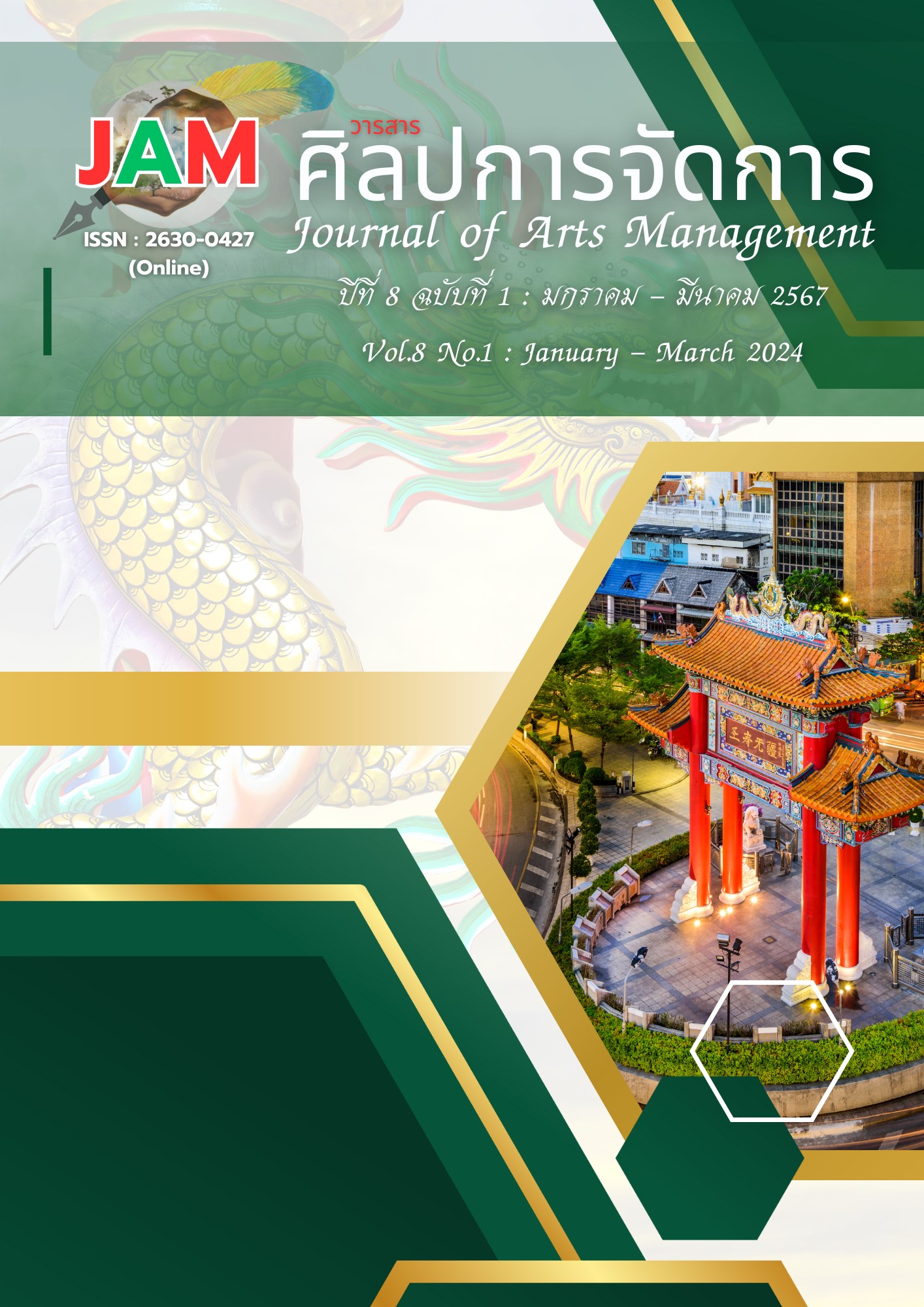Management Guidelines to Increase the Performance of Railway Construction Workers in Thailand
Main Article Content
Abstract
The objectives of this research were to: 1) study the conditions and problems of the competency of workers in railway construction in Thailand; 2) study the competency of workers in railway construction in Thailand; 3) compare the differences between the competency of workers in railway construction in Thailand classified by organizational characteristics factors; 4) study the factors affecting the competency of workers in railway construction in Thailand; and 5) present the guidelines for management to enhance the competency of workers in railway construction in Thailand. The sample group included the supervisory managers of railway construction contractors in Thailand, a total of 400 people, and key informants that consisted of academics and railway construction labor administrators, a total of 19 people. Data were analyzed using descriptive statistics, one-way ANOVA, and MRA. The results found that 1. the railway system has a shortage of workers with specific skills in railway work, both quantitatively and qualitatively. 2. The workers overall performance is at a high level., it was found that there is labor development. Overall, it is at a high level, and it has a high level of labor management to a large extent as well. 3. Workers in belonging to companies with experience in rail work and companies that have organized their own railway training programs in the past five years have different opinions about their ability to work in railway construction. Significantly at the .01 and .05 levels. 4. All labor development factors are able to jointly explain the competency of railway construction workers at 50.90 percent and every labor management factor, together, can explain the competency of railway construction workers at 34.30 percent. and 5. The guidelines for management to increase the performance of railway construction workers includes organizing training in specific skills and networking with entrepreneurs.
Article Details

This work is licensed under a Creative Commons Attribution-NonCommercial-NoDerivatives 4.0 International License.
Views and opinions appearing in articles in the Journal of Arts of Management It is the responsibility of the author of the article. and does not constitute the view and responsibility of the editorial team I agree that the article is copyright of the Arts and Management Journal.
References
Boonying, J. (2017). Construction Work Management at Maptaphut Industrial Estate. Phranakhon Rajabhat Research Journal (Humanities and Social Sciences). 11(1), 136-148. https://so05.tci-thaijo.org/index.php/PNRU_JHSS/article/view/48520
Cochran, W.G. (1953). Sampling Techniques. John Wiley & Sons.
Chalaemwong, Y. (2021). Production and Human Resource Development in the Thailand 4.0 era. Thailand Development Research Institute (TDRI). https://tdri.or.th/2018/10/human-resource-th-4-0/
Department of Labor Protection and Welfare Ministry of Interior. (2023). Labor Protection. https://lb.mol.go.th/en/labor-protection
Damrong Rajanubhab Institute, Ministry of Interior. (2009). Results-Based Management Tools. http://www.stabundamrong.go.th/web/book/53/b19_53.pdf
Department of Labor Protection and Welfare, Ministry of Labour. (2023). National Skill Standards Ministry of Labor. https://lb.mol.go.th
Drucker, P. F. (1993). Management: Tasks, Responsibilities, Practices. Harper Business.
DeSimone, R. L., Werner, J.M., & Harris, D.M. (2002). Human Resource Deployment (3rd ed.) Harcourt College Publishers.
Rittirong, J., & Tadee, R. (2020). Challenges in Production Thai Skilled Labor for AEC Job Market (Research Report). Institute for Population and Social Research Mahidol University.
Ministry of Labour. (2021). Ministry of Labor Policy Fiscal year 2021. Strategy Division Strategy Development Group, Ministry of Labour.
Ministry of Labour. (2022). Thailand’s Labor Shortage Affects the Manufacturing and Construction Sectors. Ministry of Labour.
Office of the National Economic and Social Development Council. (2021, Nov 22). Labor situation in the third quarter of 2021. THAIPublica. https://thaipublica.org/2021/11/nesdc-3rd-quarter-social-report/
State Railway of Thailand. (2023). Latest STATUS double track Train, Urgent Period. https://www.railway.co.th/NewsAndEvents/
Skill Development Promotion Act. B.E. 2002 and Amendment No.2 B.E. 2014. (2023). https://www.ratchakitcha.soc.go.th/DATA/PDF/2557/A/087/19.PDF
Thaweesak, T. (2020). Double-Track Railway Development Project: Potential and Economic and Social Opportunities, Case Study of Mueang District, Maha Sarakham, Province (Research Report). King Prajadhipok’s Institute.
Yadeed, B. L., & Suzanne, W. (2008). New Approach to Solving the Skill Shortages in the New Zealand Construction Industry. Engineering, Construction and Architectural Management, 15(1), 42-53. DOI:10.1108/09699980810842052


